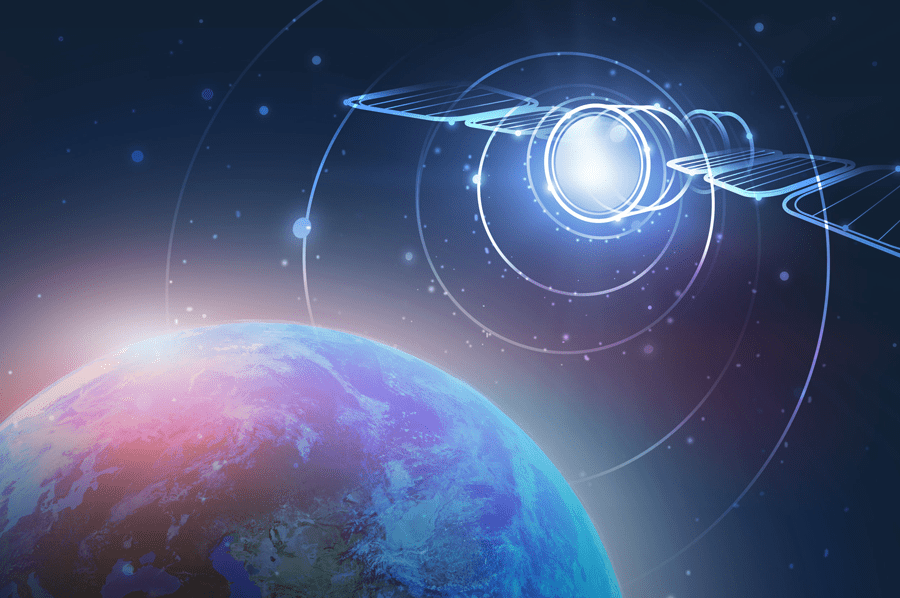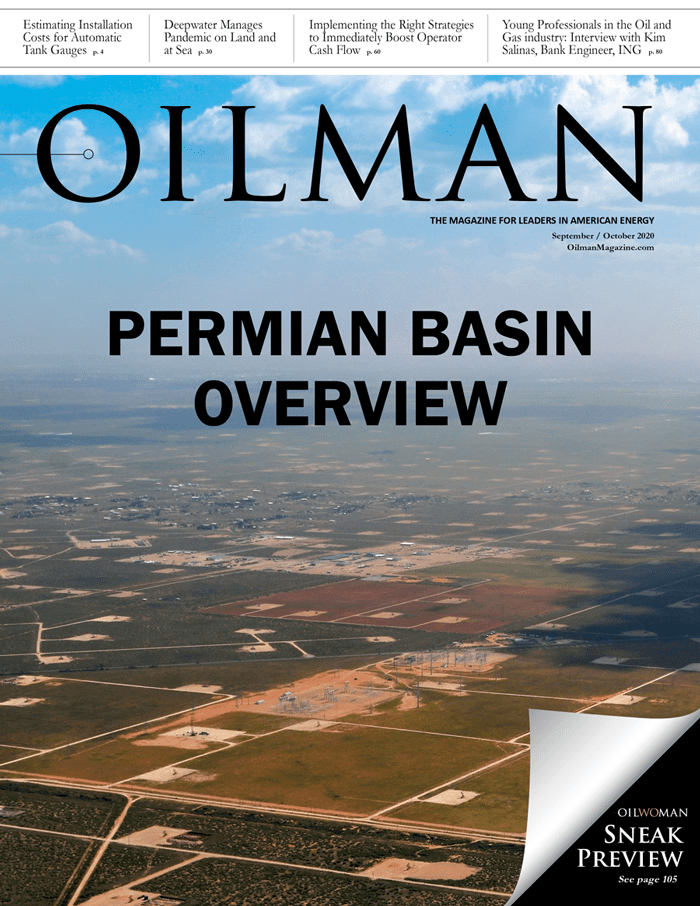The energy industry today understands the value of technology. Innovation and sensible investment can rapidly cut operating costs and reduce the risk of accident.
This is especially true in the offshore sector, which relies on technology and development to make progress and must deal with higher cost pressures than most of its onshore competitors. For high risk/high yield deepwater areas, longer term returns have become progressively more important. Many of the most ground-breaking innovations of recent times that have the greatest impact on operators can be grouped under the banner of “digitalization,” leveraging data to deliver better performance, lower costs and reduced risks.
Data driven innovation has always relied on connectivity to function in remote offshore locations. The same can be said of a lot of crew welfare initiatives, which require a stable way to communicate with shore-based staff, family and friends. The rapid technological progress we’re seeing today means that many of these new solutions require robust and reliable connectivity that can deliver high-throughput, low-latency broadband.
Operators are finding that traditional connectivity solutions are no longer effective, and this is a trend that will accelerate as better technology is mainstreamed. Oil extraction is moving to more remote regions, especially offshore where operations are moving farther toward deep-water areas. Installing cables to deliver connectivity is rarely a practical option, either from a cost perspective or often from a technical point of view, while other terrestrial options for near shore rigs can’t provide the bandwidth required to take full advantage of digitalization.
Satellite connectivity bridges this gap. Some modern satellites, especially those part of Medium Earth Orbit (MEO) constellations, are able to provide speeds and bandwidth comparable to onshore fibre optic connections, but without costly and difficult to maintain infrastructure requirements. Given these benefits, it’s no surprise that satellite communications have become an increasingly important tool for the energy industry.
Connectivity Drives Efficiency
The energy industry has long recognized the cost and efficiency savings that connectivity can bring. Satellite connections were routinely being used to transmit data to onshore specialists for fast, expert analysis by many operators as early as 1983. That represented a small amount of data being transferred slowly by today’s standards, but the benefits were clear: projects could use onshore experts to control more parameters of an operation and deliver greater efficiency.
As speeds and bandwidth have improved since then, communication equipment has also improved. Reliable HD video calling alongside other tools has enabled more management work to routinely be done from onshore locations. While companies must pay a significant premium for offshore staff salaries, safely reducing the number of full-time offshore personnel needed has become a key cost saving strategy.
In more recent years, the emergence of the Industrial Internet of Things (IIOT) across industries has put even greater demands on satellite connections. In offshore projects, technologies that can seamlessly provide opportunities to gain insights on every aspect of an operation are understandably in great demand, and modern sensors integrated into all aspects of a rig, drill, and surrounding infrastructure are delivering data to an edge and cloud-based processing centres with this in mind.
Through these sensors, operational technology is becoming increasingly connected. Systems that previously operated in isolation now feed detailed information about every critical parameter from these sensors to onshore IT systems. Microsoft Azure based cloud computing applications have enabled companies to process and analyze that data more effectively and cost-efficiently onshore. I know this because I’ve seen it myself. As a partner of Azure ExpressRoute, SES provides global reach and fiber-like high-performance to Azure customers via its complete portfolio of Geostationary Earth Orbit (GEO) satellites, O3b MEO constellation, global gateway network, and core terrestrial network infrastructure around the world.
Given the particularly direct connection between efficiency savings and profit in the industry, being able to utilize information to improve equipment or drill settings and provide lower risk through predictive maintenance have a big impact. Some are using this equipment to go even further, implementing “digital twins” of their projects to provide even more insight on equipment wear and maintenance.
This increased level of automation is having a particular impact today, in the midst of the global COVID-19 pandemic. As companies are requiring personnel to quarantine for 14 days before gaining access to offshore locations, to ensure the safety of staff aboard the installation, it has become even more logistically challenging to send staff to these remote locations. This is resulting in only absolutely critical personnel being granted access, and these connectivity-enabled automation solutions taking a particular spotlight.
These improvements have been mirrored in crew welfare. Today, operators use bespoke health monitoring equipment that can provide an onshore clinician with more information about a crew member’s health, including from scans, blood tests, and other connected monitors.
One of our maritime clients has taken this to the next level already, fully implementing remote viewing for a compact digital scope and CT scanner. Through this, it is able to provide onshore specialists with information from scans that would usually require an onshore facility and samples that would usually have to be transported manually. Utilizing this, specialist pathologists are able to remotely diagnose a raft of complex, life changing or deadly diseases.
The Rise of MEO
This level of connectivity and data use has been enabled by rapid developments in satellite technology. Until recently, the offshore industry predominantly used GEO satellites to deliver remote Internet. These GEO satellites provide global reach and, as part of a hybrid satellite ecosystem strengthened by the high speeds and bandwidth of MEO constellations, ensure uninterrupted coverage and stability. This hybrid architecture helps overcome high latency, or the time it takes for a signal to be passed from a rig to a satellite and then back to Earth.
However, many of the next-generation technologies available to the offshore industry have specific latency, throughput and capacity requirements. Data use on offshore vessels has increased, while many applications rely on its near real-time transfer to provide accurate parameter tracking and remote changes efficiently.
This all changed when the O3b MEO constellation became operational in 2014. With more advanced satellites positioned closer to Earth, this constellation has been able to provide low-latency, high-throughput connectivity, enabling the rapid shift we have seen over the last few years.
The step change can be seen in the numbers. Before MEO satellites became the industry standard, aggregated bandwidth to rigs stood at between two and ten Mbps. Today’s MEO constellations can provide scalable aggregated bandwidth in the hundreds of Mbps, meaning that more data can be transferred more quickly as other technologies have demanded greater data use.
You can see the same story in regard to latency. O3b satellites have a latency of up to 150 milliseconds for a round trip data transfer, which is often comparable with the terrestrial networks in parts of the world where many of the rigs are based, compared to 600 milliseconds for a geostationary satellite. Latency sensitive applications include staff facing applications like videoconferencing services, where the delays can be acutely noticeable, but they can also include automated services.
The O3b MEO constellation is powering connectivity for four out of the six oil and gas supermajors today in remote regions across Brazil, West Africa and the Gulf of Mexico.
Looking Ahead
High-speed, reliable and scalable connectivity solutions are vital for enabling digital solutions. Demand for real-time data is growing, and it is critical that the offshore industry has the tools required to make best use of the data revolution for its individual operations.
The next step change is due to come in 2021 in the form of the upcoming O3b mPOWER constellation. This new constellation is set to provide higher speeds, but more importantly greater scalability and flexibility.
Increasing low latency speeds and bandwidth have driven the development of remotely operated unmanned platforms, further cutting staff numbers and driving efficiency. These are entirely reliant on data connections, and faster speeds make this possible in more locations.
With O3b mPOWER, thousands of beams will be available per satellite. This means that operators can get high quality connections more reliably in more locations that would have been impossible before. It also means that good connectivity is no longer the preserve of fixed platforms as beams can be dynamically allocated, allowing offshore vessels to more efficiently leverage bandwidth when and where it’s needed.
Delivering more cost-efficient extraction directly impacts profits, and recent market conditions have highlighted just how much cost efficiency improves resilience to market shocks. To do this, operators must always be using technology that can enable cuts in operational expenditure – either on its own or by enabling a new suite of technologies.
Digital solutions are here and will continue to grow over the coming years. To deliver efficiency and better crew welfare, operators must always plan carefully to ensure that they have the appropriate connectivity solutions for their needs. Those that fail to plan will be left more exposed to future market shocks and unable to implement cost-cutting technologies.
Simon Gatty Saunt is currently vice president of Sales, Global Service Providers at SES Networks, a provider of global managed data services. He has held a number of senior positions in the satellite business for the past 20 years. This includes over 15 years at SES, which most recently included vice president of Sales EMEA prior to his current role, where Saunt’s team is responsible for the management of many SES key accounts, which include many of the world’s largest cross segment global service providers.
Prior to joining SES, Saunt held several senior sales positions, including four years at Globecast, anOrange company, where he was responsible for broadcast product and business development acrossNorthern Europe and Scandinavia, which included launching a number of satellite multiplexes on theU.K. Sky platform.






